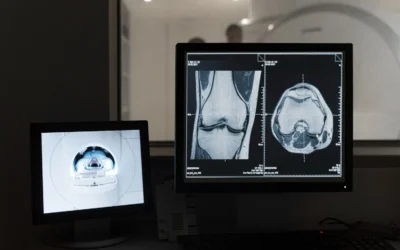Lynch syndrome is an inherited condition that significantly increases the risk of developing colorectal cancer and other cancers. People with Lynch syndrome have mutations in genes responsible for DNA mismatch repair, leading to a high rate of genetic errors called microsatellite instability. Currently, Lynch syndrome patients undergo frequent invasive screening procedures like colonoscopies starting at a young age. However, a new study suggests that detecting frameshift mutations in blood samples could provide a less invasive way to monitor these high-risk patients.
Table of Contents
The Challenge of Lynch Syndrome Surveillance
Lynch syndrome affects approximately 1 in 279 individuals and can increase lifetime colorectal cancer risk up to 82%[1]. The current recommendation is for Lynch syndrome carriers to begin colonoscopy screening every 1-2 years starting at age 20-25 for those with MLH1 or MSH2 mutations, or age 30-35 for MSH6 and PMS2 mutations[1]. However, adherence to this intensive screening regimen is low, estimated at only 38%, likely due to the burden and costs for patients[1].
There is a clear need for less invasive surveillance methods that can detect cancer development early in these high-risk individuals. Recent advances in liquid biopsy techniques, which analyze tumor DNA circulating in the blood, have shown promise for cancer detection and monitoring in other contexts.
A New Approach: Detecting Frameshift Mutations in Blood
Researchers hypothesized that the characteristic frameshift mutations caused by mismatch repair deficiency in Lynch syndrome tumors may be detectable in blood samples, even before cancer develops. To test this, they developed a panel to detect 122 common frameshift mutation targets and analyzed blood samples from Lynch syndrome patients, cancer patients with high microsatellite instability, and healthy controls[1].
Key findings from the study include:
- Frameshift mutations were detectable in cell-free DNA from blood samples of patients with high microsatellite instability cancers, with up to 66.4% of targets detected in some patients.
- An asymptomatic Lynch syndrome carrier had detectable frameshift mutations, with more mutations found in a later blood sample.
- Healthy controls had very low levels of frameshift mutations detected (average of 1.6 per sample).
- The panel showed high sensitivity and specificity for distinguishing patients from healthy controls, with an area under the curve of 0.94 in receiver operating characteristic analysis.
Potential Impact on Lynch Syndrome Management
This frameshift mutation panel could potentially transform Lynch syndrome surveillance in several ways:
- Less invasive monitoring: Regular blood tests could reduce the frequency of colonoscopies needed, especially in younger patients.
- Earlier detection: Tracking frameshift mutations over time may allow for earlier identification of cancer development.
- Personalized screening: The number of mutations detected could help stratify patients’ risk and customize screening intervals.
- Improved adherence: A simple blood test may increase patient compliance with regular monitoring compared to colonoscopy.
- Treatment guidance: Frameshift mutation profiles could potentially guide immunotherapy or vaccine approaches targeting neoantigens.
Limitations and Future Directions
While promising, this study had some limitations. The sample size was relatively small, and samples came from various sources with limited clinical data. Additionally, the volume of blood available for some samples was low, which may have impacted detection sensitivity.
Further research is needed to validate these findings in larger, prospective cohorts of Lynch syndrome carriers. Key questions to address include:
- How early can frameshift mutations be detected before clinical cancer diagnosis?
- Does the number or pattern of mutations correlate with cancer risk or prognosis?
- Are there differences in mutation profiles between different mismatch repair gene mutations or cancer types?
- What is the optimal panel size and composition for Lynch syndrome surveillance?
Conclusion
The ability to detect characteristic Lynch syndrome mutations through a simple blood test represents an exciting advance in cancer surveillance for this high-risk population. While further validation is needed, this approach has the potential to improve early detection while reducing the burden of invasive screening procedures. As we move towards more personalized cancer prevention strategies, incorporating molecular biomarkers like frameshift mutations may allow for more effective and patient-friendly monitoring of Lynch syndrome carriers.
References
- Song Y, Loomans-Kropp H, Baugher RN, et al. Frameshift mutations in peripheral blood as a biomarker for surveillance of Lynch syndrome. JNCI: Journal of the National Cancer Institute. 2024;116(6):957-965. doi:10.1093/jnci/djae060
- National Comprehensive Cancer Network. NCCN Clinical Practice Guidelines in Oncology: Genetic/Familial High-Risk Assessment: Colorectal. Version 1.2022.
- Wan JCM, Massie C, Garcia-Corbacho J, et al. Liquid biopsies come of age: towards implementation of circulating tumour DNA. Nat Rev Cancer. 2017;17(4):223-238. doi:10.1038/nrc.2017.7





0 Comments